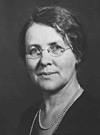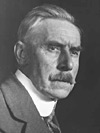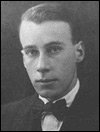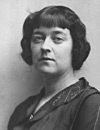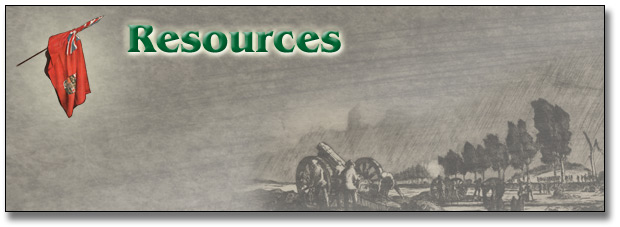
Major Battles in which the Canadian Expeditionary Force Participated
Ypres – May 1915
Festubert and Givenchy – June 1915
St Eloi Craters – April 1916
Mount Sorrel – June 1916
Somme – July – November 1916
Vimy Ridge – April 1917
The Scarpe – April- May 1917
Passchendaele – October – November
1917
Amiens – August 1918
Arras – September 1918
Cambrai – September 1918
Capture of Valenciennes – November 1918
Sources
Dean F. Oliver, Laura Brandon. Canvas of War: Painting the Canadian Experience 1914 to 1945, Vancouver: Douglas & McIntyre, 2000.
The Canadian Who's Who, vol. ll. London: Times Publishing Co., 1936.
Colin S. Macdonald. A Dictionary of Canadian Artists, vols. 1-7, Ottawa: Canadian Paperbacks Publishing Ltd., various publication dates.
Maria Tippett. Art at the Service of War - Canada, Art, and the Great War, Toronto, University of Toronto Press, 1984.
Rosemarie L. Tovell. A New Class of Art, The Artist's Print in Canada, 1877-1920, Ottawa: National Gallery of Canada, 1996.
Other Web Sites with Information about the First World War
The Artists
Caroline H. Armington (1875-1939)
Caroline Armington and her artist husband, Frank Armington (1876-1941) spent the majority of their working lives in France. Originally from Brampton, Ontario, the young artist made her living teaching art before training to be a nurse. In 1900 she made her first visit to Paris, returning there to live in 1905. With her husband’s encouragement she began making etchings in 1908. During WWI Armington put her nursing skills to good use for the American Ambulance Service; however, always entrepreneurial about promoting her work, she sought a commission from the Canadian War Memorials Fund. Following her appointment, she subsequently produced a full edition of prints, many of which reflected her skill with architectural subject matter.
Cyril H. Barraud (1877-1965)
British born Cyril Barraud arrived in Manitoba in 1913 and became a leading figure in the Winnipeg arts community. He served as President of the Manitoba Society of Artists and Craftsmen and in 1915 was a founder of the Winnipeg Art Club. An experienced artist and printmaker, Barraud’s skills were utilized at the front after his posting overseas in 1915 as a lieutenant with the 43rd Battalion of the Canadian Expeditionary Forces. Throughout 1916 and 1917 Barraud made sketches of the war-torn French countryside and when, in August of 1917, he was appointed to the Canadian War Memorials Fund, many of these sketches were executed as full print editions.
Edgar Bundy A.R.A. (1862-1922)
Edgar Bundy was one of the English artists commissioned to produce works for the Canadian War Memorials Fund. Around 1918 Bundy produced a large painting of the landing of the 3rd Canadian Infantry Brigade at St. Nazaire, France in 1915. Bundy’s print reproduces this stirring figurative work, which records the colourful entry of the band of the Black Watch overseen by Canadian generals and dignitaries and crowds of onlookers. Tied up at dock in the background is the steamship Novian.
Gerard de Witt
Originally from South Africa, Gerard de Witt enlisted in the Canadian Expeditionary Force in Halifax and travelled to France as a lieutenant in the 6th Canadian Siege Battery. Although not well known as a printmaker, de Witt’s etchings dramatically capture some of the most memorable scenes of the Canadian advance through Cambrai to Mons in the Fall of 1918.
Richard Jack A. R. A. (1866-1952)
Richard Jack was born in Sunderland, England in 1866. A trained artist, he soon established a reputation for his portraits, including those of the English and European monarchy. In November of 1916 Jack, who would not settle in Canada until 1930, received the first commission of the Canadian War Memorials Fund. Assigned the rank of major he left England for France where he recorded scenes of some of the most famous action undertaken by Canadian troops. The prints of the Second Battle of Ypres and Battle of Vimy Ridge reproduced his vast canvases, the latter being over 19 feet long.
C. W. Jefferys (1869-1951)
Charles William Jefferys is perhaps best known for his historical illustrations in school textbooks, magazines and newspapers. However, he was also an accomplished landscape painter, achieving particular renown for his prairie canvases. Born in England in 1869, Jefferys’ family came to Canada via Philadelphia in 1881. While ill health prevented Jefferys from going overseas as an official war artist, both he and Dorothy Stevens received commissions to document war preparations on the home front. Jefferys’ work focused on training camp activities in Petawawa, Niagara and Toronto. Although the artist had shown little interest in printmaking, his early experience as an apprentice at the Toronto Lithographic Company would prove useful in the execution of the transfer lithographs he made for the Canadian War Memorials Fund in 1919. Today, the life and work of this prolific artist is commemorated by an historic plaque located on the site of Jefferys’ house and studio in North York, Ontario.
C. R. W. Nevinson (1889-1946)
British artist C. R. W. Nevinson was born in London and studied at the Slade School of Art. In 1912 he moved to Paris to study at the Académie Julian, and is reputed to have shared a studio there with Modigliani. Nevinson’s early encounter with the war occurred in 1914-16 when he served with the Royal Army Medical Corps and the Red Cross as an ambulance driver. Later, in 1917, he was appointed an official war artist and returned to France where he creatively approached his subjects by making sketches from the air in planes and observation balloons. The print of Nevinson’s War in the Air reproduces his painting, now in the Canadian War Museum, of an aerial confrontation involving one of Canada’s most famous aviation heroes, Billy Bishop.
Gyrth Russell (1892-1970)
Dartmouth born Gyrth Russell attended the Victoria School of Art and Design in Halifax, Nova Scotia. Early on he demonstrated a strong interest and technical facility in printmaking. Further study in Boston and then Paris confirmed his stylistic affinity with the Impressionists which is particularly apparent in his coloured aquatints. In 1917, Russell was appointed to the Canadian War Memorials Fund along with fellow Canadian artists, A. Y. Jackson, Cyril Barraud and James Kerr Lawson. Assigned the rank of Lieutenant, Russell completed a full set of drypoint etchings for the Fund. On his discharge from the army, he settled permanently in England where he continued to paint and exhibit his work until his death in Penarth, Wales at the age of 78.
Dorothy Stevens (1888-1966)
Between 1904 and 1911 Toronto native Dorothy Stevens received her art training in some of the most prestigious schools of London and Paris. By the time of her return to Canada in 1911 she was well travelled and demonstrated a high level of skill in printmaking. In Toronto the artist continued to develop her reputation, garnering excellent exhibition reviews and a Silver medal at the Panama-Pacific International Exhibition in San Francisco for the 19 etchings she displayed there. In addition to her etchings, Stevens also acquired a reputation as a fine portrait artist and many of her works can be found today in the collections of the National Gallery of Canada and the Art Gallery of Ontario. In 1919, Stevens solicited a commission from the Canadian War Memorials Fund. This resulted in a set of etchings documenting the home front activities of the Toronto shipbuilding yards and the munitions workers at the British Forgings plant. At the close of the war, she returned again to Europe on a travelling scholarship to continue her art. Stevens died in Toronto in 1966 at the age of 78.
